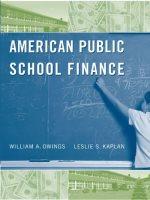Question
You will walk through an example of calibrating a model to use for recommending portfolio allocations. This process will familiarize you with one approach to
You will walk through an example of calibrating a model to use for recommending portfolio allocations. This process will familiarize you with one approach to the problem, and follows some of Chapter 4.
First, download some data. Go to Yahoo Finance and download levels for the assets in the allocation below. Use the monthly adjusted close values (so you can ignore the dividend information) for the period :
Start date: 3/1/2013
End date: 3/1/2023
(use the "max" time period to download and then trim to this range)
This will provide ten years of monthly returns (April 2013 - March 2023 -- 120 observations).
Calculate the log returns for these assets (30 points), and then follow the directions in the book for calculating the James-Stein Estimates for these assets (30 points). Refer to the text pages 70-73 for calculating the log returns.
Now, assume that some rational investor will have the following asset allocation:
15% Russell 2000 (^RUT)
15% SPDR S&P 500 ETF Trust (SPY)
20% Invesco QQQ Trust (QQQ)
7% Clough Global Equity Fund (GLQ)
20% iShares 20+ Year Treasury Bond ETF (TLT)
14% iShares iBoxx $ Investment Grade Corporate Bond ETF (LQD)
7% Templeton Global Bond Fund Class A (TPINX)
2% SPDR Gold Shares (GLD)
The Yahoo Finance ticker is in parentheses for each asset.
This means that some investor, who is solving the mean-variance problem, will own this portfolio, which in turn means it has to be on the efficient frontier. Use the methodology discussed in the book for Implied Estimates to find a set of inputs that will put this allocation on the efficient frontier defined by these assets (40 points). This means you need to "pin down" the returns for two assets so that you can derive a risk premium for calculating the zero-beta CAPM implied returns for the other assets. For this exercise, use the James-Stein estimates for Russell 2000 (^RUT) and iShares 20+ Year Treasury Bond ETF (TLT) in this role.
For an additional 10 points of extra credit, use the implied estimates and expand the "5 Asset Efficient Frontier" example to cover 8 assets, and see if using a target return equal to the implied estimates portfolio return actually recovers those asset allocations.
I've attached a blank template below-- just fill it in -- this will be your submission for this assignment. Please don't mess with the formatting. You can have extra tabs for the raw price data if you like.
| Implied Views | ||||||||
| Beg: | ||||||||
| End: | ||||||||
| Length: | ||||||||
| Russell 2000 | SPDR | Invesco QQQ | Clough Global Equity | iShares 20+ Treasury Fund | iShares iBoxx Investment Grade | Templeton Global Bond Fund Class A | SPDR Gold Shares | |
| Annualized Mean | ||||||||
| Annualized s | ||||||||
| Annualized s | ||||||||
| Variance/Covariance Matrix | ||||||||
| Russell 2000 | ||||||||
| SPDR | ||||||||
| Invesco QQQ | ||||||||
| Clough Global Equity | ||||||||
| iShares 20+ Treasury Fund | ||||||||
| iShares iBoxx Investment Grade | ||||||||
| Templeton Global Bond Fund Class A | ||||||||
| SPDR Gold Shares | ||||||||
| Equilibrium Weight | ||||||||
| Target Expected Log Return () | ||||||||
| Target Log of Expected Gross Return () | ||||||||
| Covariance w/ Equilbrium Portfolio | ||||||||
| Beta wrt Equilbrium Portfolio | ||||||||
| Implied Means Expected Log Return () | ||||||||
| Implied Means Log of Expected Gross Return () | ||||||||
| Variance of Equilibrium Porfolio | ||||||||
| Risk Premium | ||||||||
| Expected Return on 0-Beta Portfolio | ||||||||
| Expected Return on Equilibrium Portfolio |
Step by Step Solution
There are 3 Steps involved in it
Step: 1

Get Instant Access to Expert-Tailored Solutions
See step-by-step solutions with expert insights and AI powered tools for academic success
Step: 2

Step: 3

Ace Your Homework with AI
Get the answers you need in no time with our AI-driven, step-by-step assistance
Get Started


